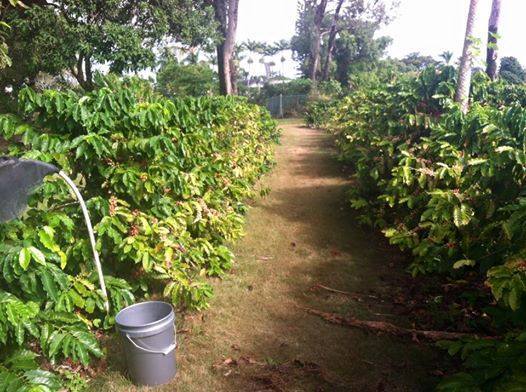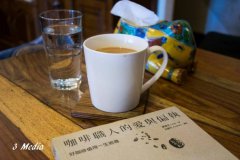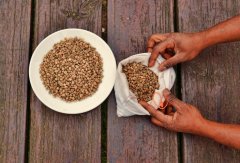Explore the flavor of Hawaiian coffee: what makes the most expensive coffee-Kona Coffee

Professional barista communication, please pay attention to coffee workshop (Weixin Official Accounts cafe_style )
What is Hawaii's connection to coffee?
The Hawaiian Islands are a group of islands in the north-central Pacific Ocean. The Hawaiian Islands, also known as the Sandwich Islands from 1778 to 1898, are part of the Polynesian archipelago, an archipelago of 19 larger islands and other islets, mostly volcanic or coral islands. It lies between 19° and 29° north latitude, with the Tropic of Cancer passing through the archipelago.
Belonging to the Pacific Ocean and Oceania, it is arranged in the southeast-northwest direction, with a total length of 2400 kilometers and an area of 16705 square kilometers. The largest of these islands is the southeastmost Hawaiian Island, which locals call the Big Island. The highest point is Mauna Kea, 4205 meters above sea level.
This summer, I visited Hawaii and Ryukyu, two Pacific islands that are geographically very similar to Taiwan. At present, there is still a familiar feeling and a strange sense of alienation in these two places. Take agricultural products for example. Walking around Hawaii and Okinawa, you can easily see sugar cane, bananas, pineapples, and even taro, which are common crops in Taiwan. However, there are also some unique crops unique to each of the three islands, such as Hawaiian beans, which are believed to be the first impression of Hawaii for many people who have not yet visited Hawaii.
The nut of Australia is the macadamia bean
The Hawaiian bean's English name is Macadamia. Also known as Australia nut because it is actually native to Australia. It is an evergreen tree of 2 to 12 michaels, the Hawaiian bean is a green seed that falls to the ground from the tree, and the fruit is a hard woody ball with a distinct apex containing 1 to 2 seeds.
Within two days of the Hawaiian bean landing, it will begin to explode and change color. Within four days, the seeds of the Hawaiian bean will burst and turn brownish gray, during which time the flavor of the Hawaiian bean is at its best. If left too long, the shell becomes too dark and the nuts lose their creamy flavor. At this point, you can't call it the top Hawaiian bean.
The third wave of coffee revolution, the manor each break a sky
As for "Hawaiian coffee", due to the pursuit of the Japanese in the early days, due to the successful marketing of the Kona region of Hawaii Island (commonly known as Big Island), most consumers mistakenly thought that Kona was Hawaiian coffee. In fact, Kona coffee refers to coffee that is 100% produced in the Kona region. (There is also 10% Kona coffee mixed with 90% coffee beans from other regions)
In fact, under the third wave of the fine coffee revolution, coffee farms on Hawaii islands have stepped out of the shadow of "Kona only" and made their own way into the global market.
Hawaiian coffee, which is common on the market today, has coffee plantations in Maui, Kawu and Kauai, in addition to the kona area of the Big Island. Common Hawaiian coffee varieties include Typica, Mocca and Catuai.
The most expensive coffee on the market: Kona Coffee
However, Kona Coffee is still one of the most expensive coffees on the market, and according to Hawaii's Department of Agriculture regulations, only coffee on the slopes of Hualalai and Mauna Loa in Big Island, Kona District, can be called Kona Coffee. Hawaii's sunny mornings, cloudy and rainy afternoons, light breezes and mild nights, combined with mineral-rich volcanic soils, create its special flavor.
Kona Coffee is divided into two categories: Type I (flat beans) and Type II (Peaberry).
These two classes are further divided into 'Kona Extra Fancy,''Kona Fancy,''Kona Number 1,''Kona Select,' and 'Kona Prime,' according to size, moisture content, and seed purity; Type II Kona coffee is divided into 'Peaberry Number 1' and 'Peaberry Prime,' and a lower grade 'Number 3' is not called Kona Coffee.
Kona Coffee's biggest threat in recent years has been the coffee berry moth (Hypothenemus hampei) infestation, and by late November 2010, Hawaii's Department of Agriculture announced that all green beans must be fumigated with methyl bromide or another six-step procedure before leaving the Big Island.
In the future, coffee from Kona will probably fluctuate greatly in terms of production and price. Because of this, coffee farmers on Kauai, Kawu and Maui have gradually emerged in the past two years.
Through Peter's local perspective, we hope to explore the coffee flavors of Hawaiian islands through the dense silver bullet offensive of Japanese bean merchants, especially direct dialogue with local micro-farms, enjoying their own coffee flavors. The CSA (Community Supported Agriculture) operation experience cultivated over the past few years seems to be just right for this place.
Note: The photo is Peter's coffee garden, this time too hasty to visit, next time, must personally play the game of picking beans.
Important Notice :
前街咖啡 FrontStreet Coffee has moved to new addredd:
FrontStreet Coffee Address: 315,Donghua East Road,GuangZhou
Tel:020 38364473
- Prev

Let Don Kamandra tell you a foreign story-709 Nepalese Cafe
Professional barista communication please follow the coffee workshop (Wechat official account cafe_style) a fragrant candle, comfortable; a light tea, easy; a cup of Nepal, tell the exotic feelings. As soon as I got to the door of the coffee shop, I was stunned by the heavy wooden doors and the flower windows above, which were decorated with exquisite Nepalese ornaments and a special turning wheel.
- Next

The beginning of the story of coffee farmer Peter and me: starting with the bean dryer left by my grandfather
The exchange of professional baristas please follow the coffee workshop (Wechat official account cafe_style) Peter is a coffee farmer on Maui Island. He is an Australian who has taken over the 12kg PROBAT from his grandfather since he was a child. The old machine has no parts to replace, but Peter still keeps it running today. When Peter first moved to Maui, he also brought
Related
- Mocha pot coffee machine coffee grease extraction skills! Is coffee grease or Crema bubbles?
- What is the difference between siphon pot coffee and hand-brewed coffee? What coffee bean parameters and water temperature ratio are appropriate for the siphon pot to make coffee?
- Which is better, Guixia or Huakui coffee? Are Huakui and Guixia the same coffee variety? What is the difference between Huaquai and Geisha?
- Adjust the market layout! Starbucks closes 400 city stores in New York and other places!
- Ice cream scoops will return to the bar?! Ruixing employee: Want to make Xueting Coffee?
- Why is the espresso extraction ratio 1:2? Espresso extraction solution Water volume water temperature pressure powder amount Share!
- How about hand-brewed coffee with rose summer coffee beans in Kafa Forest? What coffee producing area does the Kafa Forest in Ethiopia belong to?
- Brazilian coffee yellow bourbon brewed flavor characteristics and origin share! What grade is red bourbon coffee?
- How to judge the roasting degree/concentration/filtration method of coffee beans from the color of coffee soup? What is the difference between dark and light roast coffee?
- Why are the coffee in some coffee shops not enough after being frozen? What should I make up for my American latte cappuccino coffee after being frozen?

